A leaking toilet can be a homeowner's nightmare. Not only does it waste water, but it can also cause water damage to your bathroom floor, potentially costing a lot of money.
The toilet seal is one of the most crucial elements in ensuring a leak-proof toilet. But when picking the best toilet seal, the debate often centers on wax versus rubber or non-wax toilet rings.
In this guide, we'll explore both options, their pros and cons, and help you decide the best seal for your toilet.
Understanding Toilet Seals
A toilet seal is a gasket that sits between the toilet base and the flange on the floor. Its main purpose is to create a watertight seal, keeping water and sewer gasses from leaking from the connection between the toilet and the drainpipe. The seal, typically made of wax or wax-free rubber material, compresses to fill any gaps during toilet installation. The seal, typically made of wax or wax-free rubber material, compresses to fill any gaps during toilet installation.
A good seal is essential for maintaining the integrity of your bathroom and ensuring a pleasant environment. Over time, these seals can degrade or become damaged, which might cause leaks or other issues requiring replacement.
Wax Ring vs Waxless Toilet Ring: Pros & Cons of Each
Toilet Wax Ring
Wax rings have been used for over a century, are made from a blend of petroleum waxes, and are designed to be soft and malleable, allowing them to conform to the shape of the flange and toilet base. This flexibility makes them effective at creating a watertight seal.
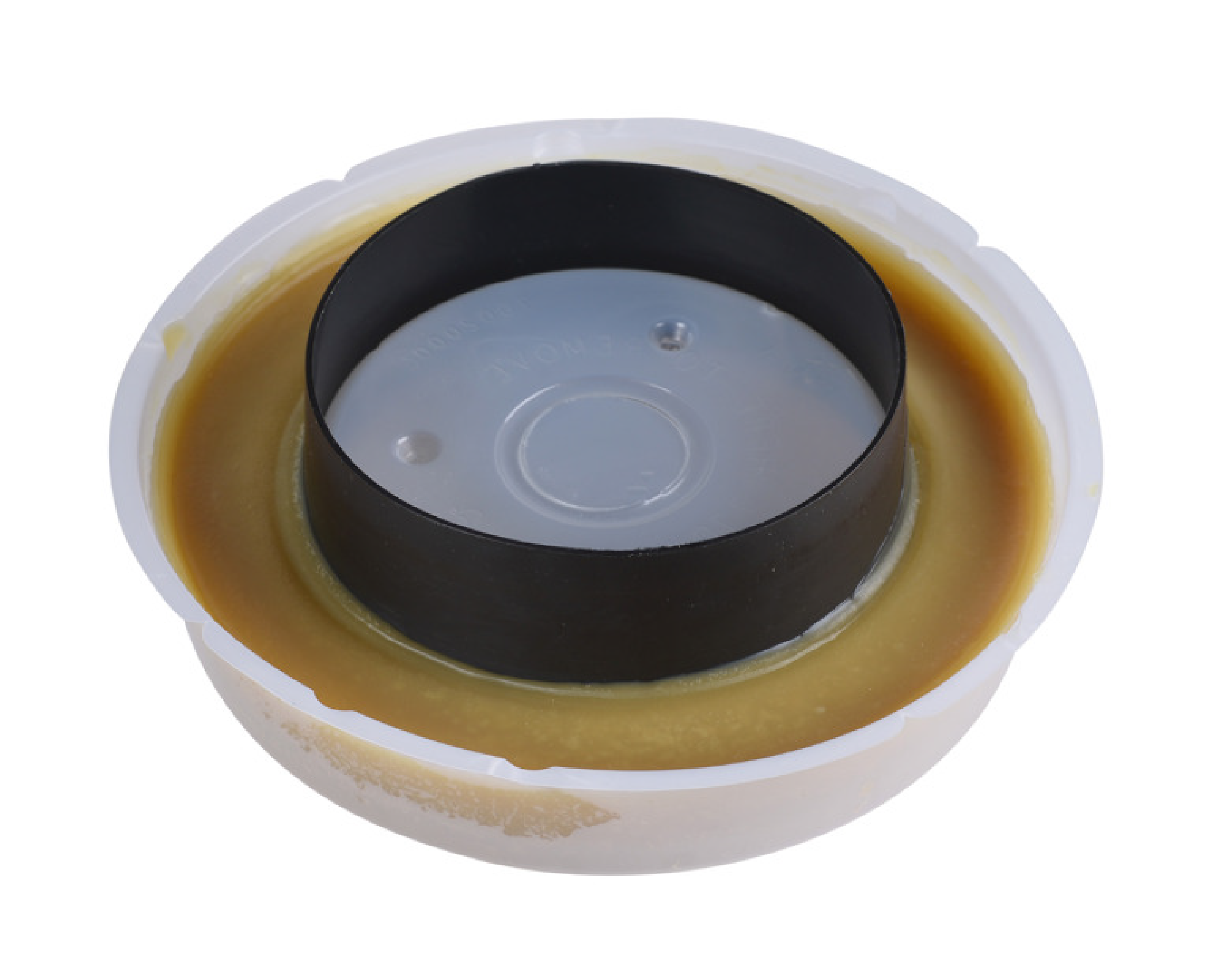
When installing a toilet, the wax ring is compressed between the toilet and the flange. As noted, this compression creates a tight seal that prevents water and sewer gases from leaking out.
Oatey offers a range of wax rings for your bathroom needs. The most popular is the Hercules Johni-Ring®, made from 100%-pure, high-grade petroleum wax that easily conforms to rough surfaces. It includes a clean release tray for mess-free handling and simple installation.
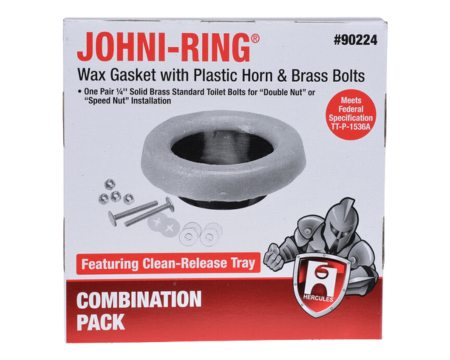
Pros:
- Effective seal: Wax rings provide an excellent seal lasting for years.
- Cost-effective: Wax rings are cheaper than non-wax alternatives.
- Proven track record: With over 100 years of use, wax rings have a proven history of reliability.
Cons:
- Single-use: Once compressed, a wax ring cannot be reused if you need to reposition the toilet.
- Temperature sensitivity: Wax rings can become hard and less effective in cold temperatures. For the best installation results, make sure the wax ring is at room temperature. To speed up this process, consider placing the ring in warm water for a few minutes to soften the wax.
- Messy installation: Wax installation can often be messy and demands careful placement to prevent leaks. Oatey addresses this issue by providing a release tray with our wax rings for a hassle-free installation experience.
To explore different types of wax rings, check out this blog.
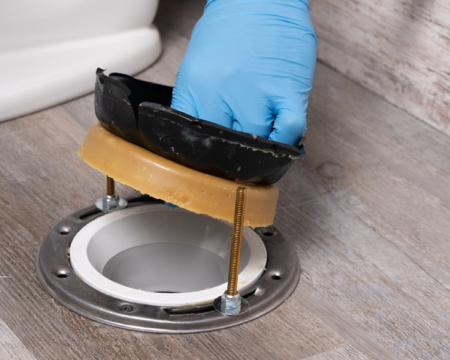
Waxless Toilet Seal | Rubber Gaskets
Rubber gaskets are made from high-quality rubber materials that are flexible and durable. They create a seal by compressing between the toilet and the flange, similar to wax rings. However, the rubber material can flex and adapt to slight movements, maintaining the seal over time.
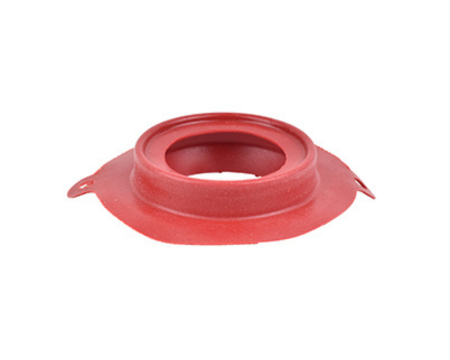
Pro:
- Reusable: Unlike wax rings, rubber gaskets can be repositioned without losing their sealing capability.
- Temperature-resilient: Rubber gaskets are less affected by temperature fluctuations.
- Easy installation: Rubber gaskets are less messy and easier to handle.
Cons:
- Higher cost: Rubber gaskets are generally more expensive than wax rings.
- Chemical sensitivity: Some rubber gaskets can be degraded by certain cleaning chemicals.

Waxless Toilet Seal | Foam Gaskets
Foam gaskets are made from high-density foam that provides a cushion-like seal. They are designed to resist deformation and adapt to uneven surfaces. The foam gasket compresses when installed to fill gaps and create a tight seal. The foam material is resilient and can accommodate minor shifts without compromising the seal.
Pros:
- Easy installation: Foam gaskets are simple to install and don't require precise placement.
- Adaptive: The foam can adapt to uneven surfaces, making it versatile.
- Durable: Foam gaskets resist deformation and can maintain their shape over time.
Cons:
- Higher cost: Foam gaskets are often more expensive than both wax and rubber options.
- Limited Reusability: While more durable than wax, foam gaskets may not be as reusable as rubber gaskets.
- Availability: Foam gaskets may not be as widely available as other types.
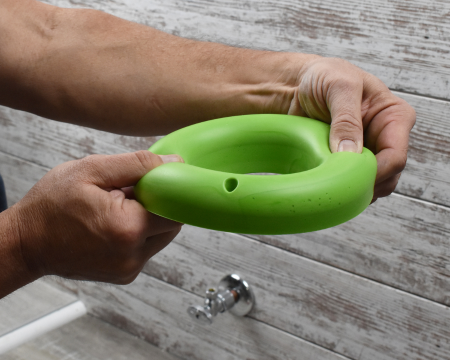
Complications with Non-Wax Gaskets
While non-wax gaskets offer several advantages, they can also come with complications such as:
- Chemical Sensitivity: Some non-wax gaskets can degrade when exposed to certain cleaning chemicals, potentially leading to leaks.
- Cost: Non-wax gaskets are generally more expensive, which can add up if multiple toilets need sealing.
- Unproven Longevity: While newer non-wax gaskets perform well initially, their long-term durability is not as well-documented as wax rings.

Whether you choose a traditional wax ring or a modern non-wax gasket, selecting a product that fits your specific needs and budget is important. Consider your toilet type, plumbing conditions, and ease of maintenance based on your personal preference.
Ultimately, selecting the right product can lead to a more secure and hassle-free bathroom experience.